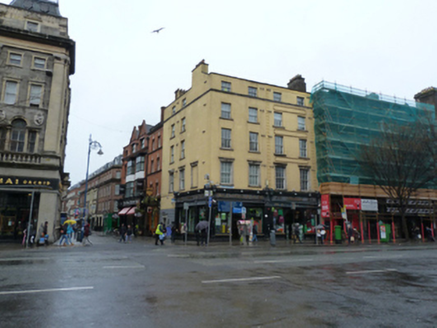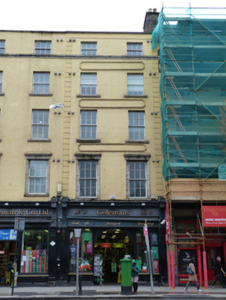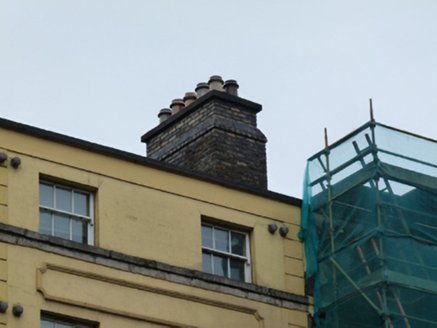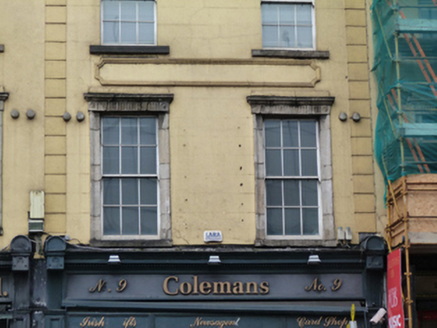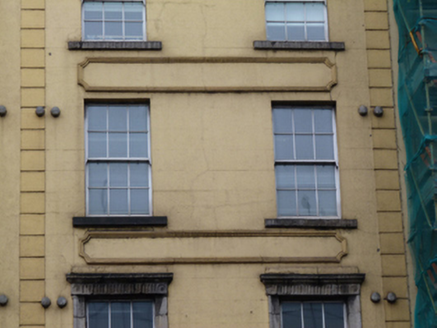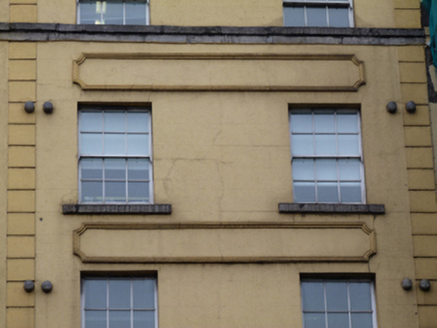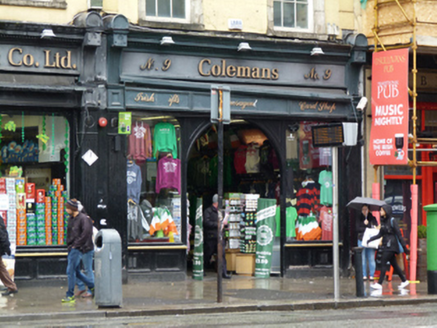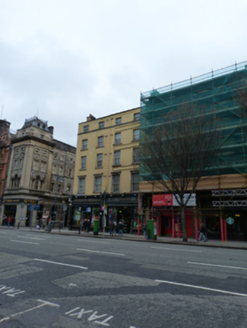Survey Data
Reg No
50020225
Rating
Regional
Categories of Special Interest
Architectural, Artistic, Historical, Social
Previous Name
Donnelly's
Original Use
House
In Use As
Shop/retail outlet
Date
1790 - 1810
Coordinates
315967, 234247
Date Recorded
02/04/2015
Date Updated
--/--/--
Description
Terraced two-bay five-storey former house and shop over basement, built c.1800, with recent shopfront to front (east) elevation. Now in use as retail outlet. M-profile roof, hipped to south to front, hidden behind rendered parapet having render coping, brown brick chimneystack with clay pots. Lined-and-ruled rendered walls having render quoins, ashlar granite cornice and rendered fasciae. Square-headed openings with granite sills, cornice forming continuous sill course to fourth floor, those to first floor having carved granite architraves and entablatures, three-over-three pane and six-over-six pane timber sliding sash windows.
Appraisal
Westmoreland Street, named after the tenth Earl of Westmoreland, was developed by the Wide Street Commissioners in the late eighteenth century as part of a network of streets connecting the newly built Carlisle Bridge (now O’Connell Bridge) and College Green. This building formed part of a unified terrace, designed by Henry Aaron Baker (1753-1836), of five-storey buildings formerly with stone shopfronts to the street. As new commercial and financial uses were introduced to the street in the second half of the nineteenth century, many façades were remodelled. Although now rendered this building has retained its original proportions and the original carved stone dressings of the first floor windows and ashlar cornice, lending continuity to the streetscape. They provide artistic interest and textural variation to the classically restrained façade. A house and yard, occupied by James Cooper, is recorded in Griffith’s Primary Valuation at this address.
